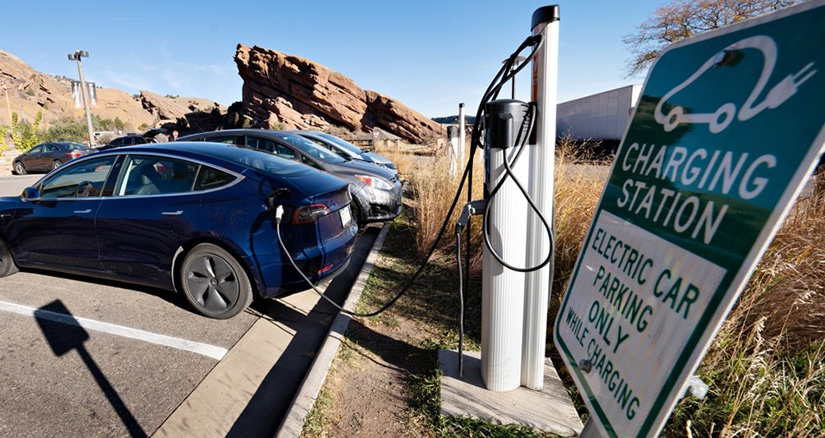About Advanced Research on Integrated Energy Systems
The Advanced Research on Integrated Energy Systems (ARIES) platform is designed to derisk, optimize, and secure current energy systems and provide insight into future energy systems that are clean, secure, resilient, reliable, and equitable.
Interactive Playbook Helps Communities Boost Electric Vehicle Charging

Imagine you are a city planner who has received comments about a lack of electric vehicle (EV) charging stations in your town. Because you do not have many EV chargers in your community, you wonder how to get input from community members on charger locations, navigate building codes and regulations, and write an effective grant application to acquire the charging infrastructure.
As EV adoption charges forward, local government officials, utilities, planning organizations, and more want to know the same thing: Where can they find a one-stop shop to plan the public infrastructure needed for a zero-emission transportation system?
Developed by researchers at the National Renewable Energy Laboratory (NREL) for the Joint Office of Energy and Transportation (Joint Office), the Public EV Charging Infrastructure Playbook (the Playbook) provides the answer. Designed to help communities plan for their EV charging needs, the Playbook recognizes the reality that most charging happens at homes, workplaces, and other locations within communities.
The Playbook arrives at a crucial time: The Joint Office just announced nearly half a billion dollars in funding from round 1B of the Federal Highway Administration's Charging and Fueling Infrastructure Discretionary Grant Program to fund more than 9,200 public EV charging ports. This massive initiative, in addition to other EV charging grant programs, means communities across the country are now looking for a tool to navigate their projects.
"I think a lot of communities, given the right instructions and tools and information, are ready, prepared, and willing to do this work on their own," said NREL's Kaylyn Bopp, project lead for the Playbook. "This playbook is perfect for that."
There are many steps that a local government must take before chargers can be deployed for use by the general public. From planning and community engagement to funding and policies, the Playbook prepares community leaders, local governments, Tribal nations, and decision makers for success.
The Playbook provides interactive resources to help communities plan and build the infrastructure to support EV charging. It contains instructional modules with guidance and best practices for planning, engagement, siting, funding, policies, regulations, procurement, and revenue. Each module contains three components: interactive activities, videos, and additional resources.
"It can be useful for people regardless of where they are in that planning process," said Lauren Reichelt, a project manager for the Playbook. "The Playbook is designed to be an accessible, full-service center that can be tailored to each community's unique needs."
Regardless of whether communities are seeking grants to build out their EV charging infrastructure or are in the final steps before a ribbon cutting, the Playbook is for everyone.
"That's why the modules are great," Bopp said. "For example, some of these communities have done a few steps. With the modules, they're able to see what's missing, fill in the blanks, and pull resources together so they can execute independently."
Charging Forward
As electric fueling choices expand, the need for more efficient and timely implementation of charging technology infrastructure is increasing.
"The Playbook is a win for communities looking to build out the national EV charging network," Bopp said. "Everyone deserves convenient transportation options, and making the Playbook widely available will help accelerate widespread charging access."
Learn more about NREL's transportation and mobility research and the Joint Office of Energy and Transportation. And sign up for NREL's quarterly transportation and mobility research newsletter to stay current on the latest news.
This article has been updated to reflect editorial changes made after its original publication.
Share
Last Updated Jan. 9, 2025
